'Beginner cyclists are finding themselves numb after minutes, some of them put off for life': The bike industry needs to take saddles more seriously
Cycling brands anticipate that saddles specced as standard are routinely replaced, but what if they’re just causing beginners to find new hobbies?


“I went cycling whilst we were at Center Parcs; I’m never doing it again, I couldn’t sit down for the rest of the day.”
“But, how do you cope with the saddles? I rode 10 miles on my new bike, and it broke me apart.”
The comments above are paraphrased, but, they are genuine recollections of conversations I have had with beginner, or would-be, cyclists. Sadly, neither has since ridden a bike.
Most cyclists will at some point develop a saddle sore. There are rare cases of cyclists resorting to surgery to address discomfort on the bike. But whilst dedicated cyclists do experience issues, the majority can ride comfortably for several hours, due to an often hard-sought union of well-fitting saddle, quality shorts, and appropriate bike fit.
Beginner cyclists, the people who could become the weekend warriors of the future, are finding themselves numb after minutes, some of them put off for life.
Having recently had an entry-level hybrid bike at my disposal, I can see why; used to being able to ride hours in comfort, I found myself wanting to pedal entirely out of the saddle to cycle the three miles to collect my daughter from nursery. I have ridden bikes for the last 15 years, so knowing this wasn’t a necessary evil, I delved into my personal saddle library and swapped the seat. But, aside from the wastage argument, the risk is that the first-time rider the bike was designed for - lacking this frame of reference - may discard the hobby altogether.
Risky business
“It’s a problem we see quite a lot”, nods Velo Atelier’s bike fitting guru and interim president of the International Bike Fitting Institute, Lee Prescott, “during Covid especially, when loads of people were getting into cycling for the first time, we were seeing loads of real newbies [with saddle issues].”
Evangelical desire to share the joy of cycling aside, risking losing these “newbies” at the first hurdle makes little business sense, a fact that Taiwanese juggernaut Giant realised when it upped its saddle focus in 2017.
“[When you keep a cyclist engaged], their spend multiples astronomically,” notes Rob Lyne, product manager across Giant’s component brand Cadex. “If you lose them for any one reason, the chance of getting them back is very minimal, you want to take them on that journey with you.”
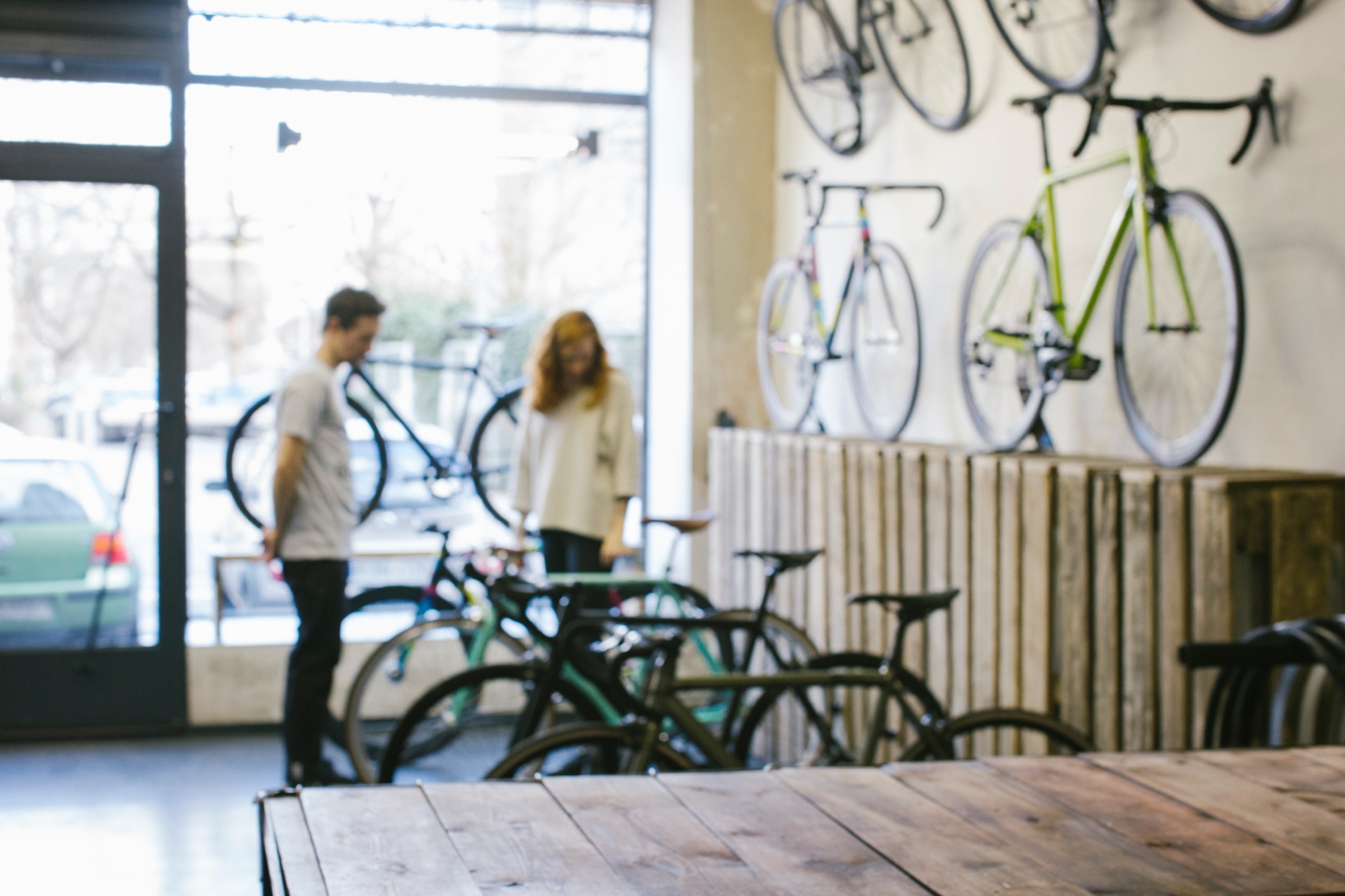
Losing customers to unnecessary saddle pain is a business risk
The vast majority of bike saddles come from one single OEM (original equipment manufacturer) factory, Velo. Product managers - who liaise with factories and choose the components on built bikes - told me that the perches specced on entry-level bikes are available for as little as $4 or $5 per unit. And yet, the beginner who embarks upon their journey on a £500/$700 hybrid may, if retained, become the owner of an array of multi-thousand-pound machines. Cycling Weekly’s own 2023 study showed the average number of bikes owned was 4; investing at the entry-level makes a lot of sense.
The ‘toughen up’ myth
So, what goes into creating a better experience for beginners? One thing’s for sure, it’s not the evolution of a cyclist’s undercarriage. There is a long-held belief that beginners need to allow their bodies to “toughen up”. Is there any truth to this? “A slither”, admits Prescott.
“If you haven’t really ridden a bike for longer than an hour before, the soft tissue that sits underneath the pelvis [in the sit bone area] does have more pressure put on it than it’s used to,” he tells me. “Within the space of one to two rides, that will get more used to the pressure. I’m not convinced it toughens up, it tones up, a bit like a muscle.” So, beginners can expect a little discomfort, early on, if they sit in a more upright position.
However, many saddle complaints I have heard do not refer to the sit bones. “This [does not apply to anything] down the middle. If [gential] areas are uncomfortable, it’s the wrong saddle, or it’s in the wrong place,” the bike fitter says confidently.
Specced to sell
The biggest offenders, according to Prescott, are overly padded perches.
“When your pelvis hits the saddle your weight kind of sinks on, and all that squishy padding has to go somewhere, so it ends up pushing into all the soft tissue areas where you just don’t want pressure. This is why a lot of the full carbon, no padding saddles can be quite comfortable. It’s not necessarily padding that makes a saddle comfortable, it’s the shape.”
Naked carbon saddles are an extreme example, but there are plenty of middle-ground options. Product managers likely understand this concept. So why do so many entry-level bikes come with heavily padded seats? “In the shop, the grips and the saddle are the first things [a customer] will put their hand on. And it has to feel soft, we hear this all the time,” explains componentry brand Oxo-Pro’s Ronny Höglund.
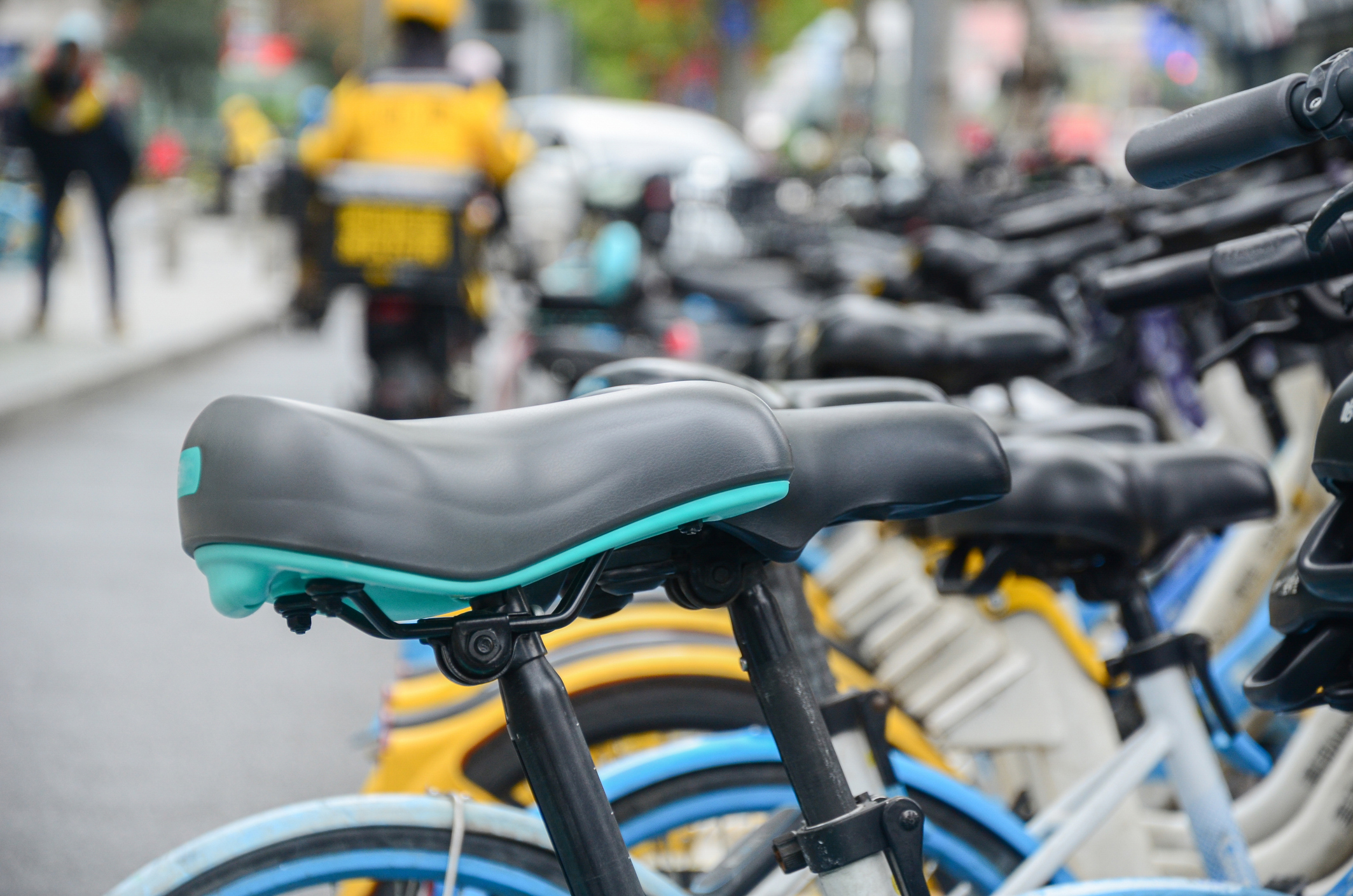
Bigger is better is a myth
Höglund, who has worked in supply and product management within the bike industry for over 20 years, said: “The product manager has to listen to the dealers, and the dealers say ‘my customer says they want to feel something soft’. If you put on a saddle that feels a little bit hard, the dealer has to explain to the consumer why that saddle would work in that position. But they may have many customers at the same time, they want the bike to sell itself as much as possible.”
According to Höglund, while “the more economical a bike is, the more economical the components must be”, saddle choices on entry-level bikes are not just dictated by cost, but instead motivated by features that will help to move them off the shop floor. More costly saddles will use more expensive manufacturing processes and materials, which can aid comfort when the likes of memory foam are introduced, but as confirmed by Prescott, it’s the shape that makes all the difference, and often this has very little implication upon cost.
A small number of brands - Ribble and Alpkit's Sonder for example - do offer the opportunity to upgrade a saddle as part of the purchase. However, the larger the marque, the more of a “logistical nightmare” this can become, says Höglund, with other options being providing upgrade saddles directly to dealers as an upsell opportunity, though this requires time and education in store.
Shape shifting
Giant is a brand that has supercharged its focus on saddle fit in recent years, with a drive to better understand biomechanics beginning, according to Lyne, in 2017. This hasn’t gone unnoticed - it was Prescott’s comment that the own brand perches have dramatically improved which prompted me to get in contact.
“If a customer takes a bike for a test ride and is uncomfortable, they won’t buy the bike,” Lyne says, before offering a whistlestop tour of the last seven years of research and progression. Work began (perhaps strangely) with kids bikes, evolving into work with Liv and JaycoAluha men’s and women’s pro teams, and - arguably - culminating in both its own-brand Cadex saddles, and the relatively new Dynamic Cycling Fit (DCF) business, which offers services from premium motion capture bike fits to more basic in-store assessments.
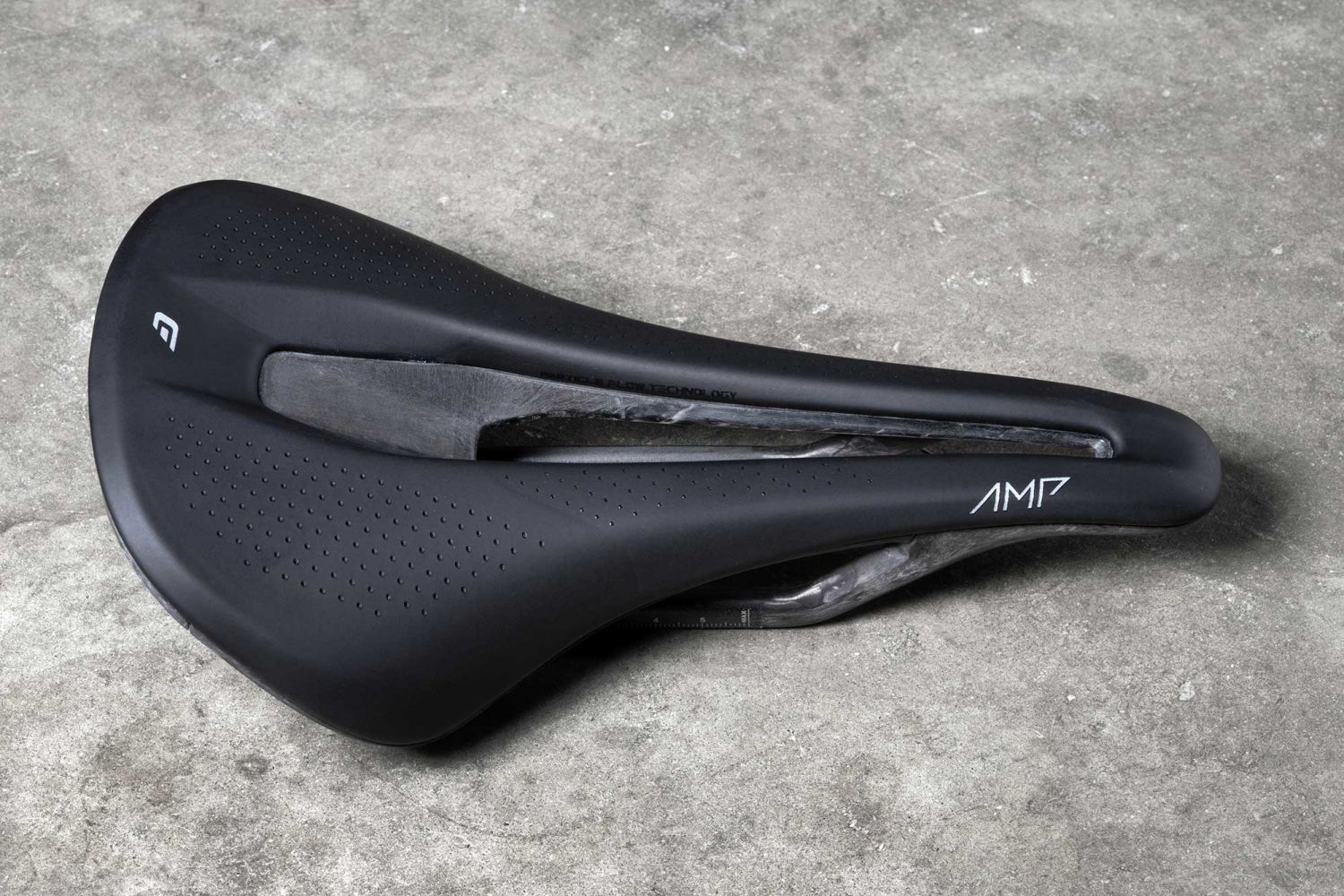
The Cadex Amp is a lightweight saddle with carbon rails, developed for racers, but its ethos has trickled down
“The research gained from working with pro athletes,” Lyne adds, “cannot be directly applied to a lifestyle hybrid bike. But, we can learn lessons, because anatomy doesn't change in those areas just because you're an elite athlete.”
Giant's research has provided the brand with clear guidelines: “The work we’ve done tells us that saddles should be shorter”, Lyne says, adding, “men's saddles need to be wider, women's saddles need to be not quite as wide.
“But how the ‘anatomy’ [soft tissue] interacts with the saddle, be that in an upright or a drop bar riding position, that's where the cut-out shape within the saddle has a profound impact on the comfort. You're still supporting the sit bones, but you're taking the pressure off all the soft tissue.”
This applies across the genders, “for a while, we had the vast majority of the men’s team riding unbranded women’s saddles,” he reveals. Interestingly, Prescott’s take is that a cut-out, or pressure relief channel, is not “necessary for most people”, but, “increases the window of opportunity for a comfortable fit”.
Of course, as ever, there is no 'one size fits all' solution to saddle comfort, some riders will always prefer a long and solid option. But Giant is confident that the short, cut-out approach is more likely than traditional designs to be 'acceptable to most'. Consequently, its Cadex range features two saddles of this nature. Elsewhere, Giant still uses OEM manufacturer Velo, but now takes a much more active role in the design than it used to.
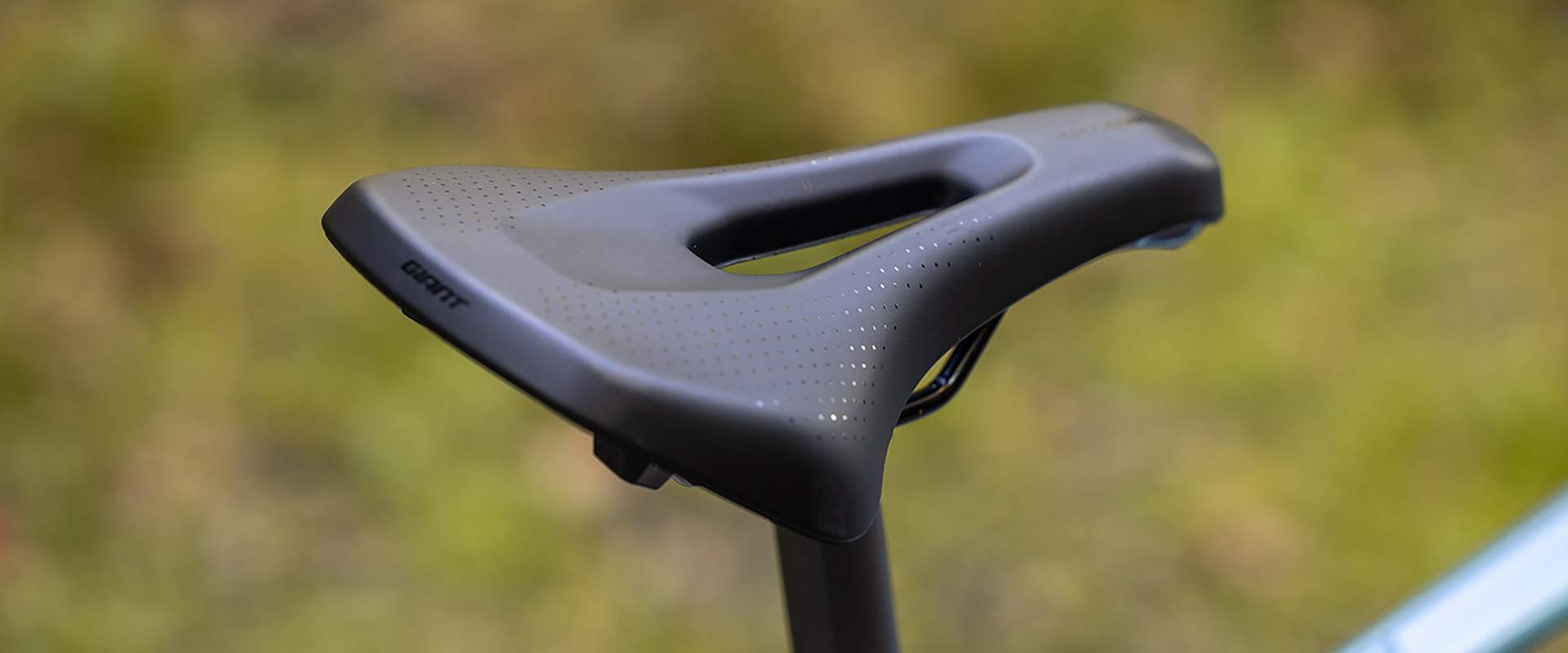
The Giant ErgoContact saddle is specced on hybrid bikes, but takes cues from technology developed for racers
“We haven’t stuck our name on an off-the-shelf saddle in years, they’re all proprietary designs, and we’ve extended that down to the sport and lifestyle level. Even with a fairly basic, $5 [to the brand] saddle, we’re still telling them where to put the support, and ultimately that leads to a more comfortable saddle.”
Giant’s hybrid Escape models, as an example, use a ‘Giant ErgoContact’ perch, which features a “short nose”, “firm cushion”, and a cut-out.
“When I look at the saddles on bikes like our Escape [hybrid bike], they look more performance orientated than they used to. And, that shaping has come from our original studies with performance product.”
The emergence of the short nose
The trend towards short-nosed road saddles entered cycling via Specialized, which introduced the Power in 2015. Developed as a women’s saddle, it was soon found to suit both genders. The defining feature - a short nose and wide cut-out or ‘Mimic’ pressure relief channel - has since been adopted by brands across the industry, and the style suits a range of riding styles.
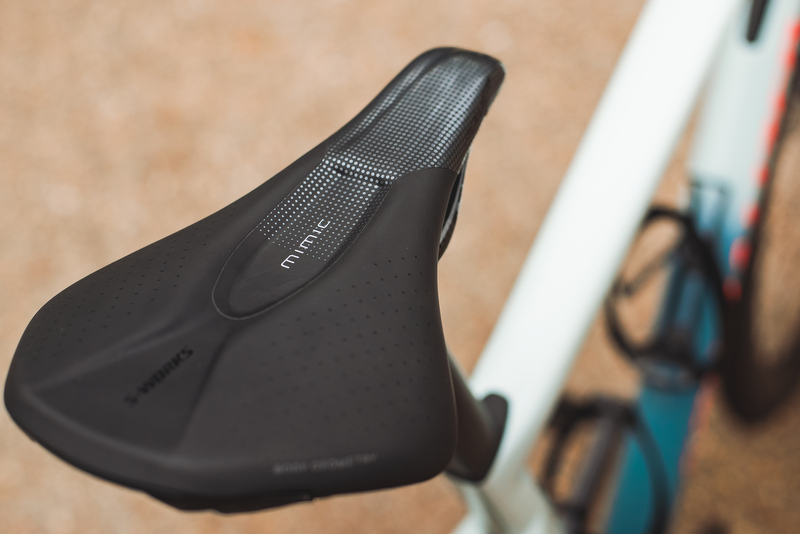
The Power saddle is now available with a cut-out, or 'Mimic' channel which uses memory foam to 'mimic' soft tissue and create comfort
Hire bike equality
Prescott assures me that this is a “50/50” problem when it comes to gender, he sees just as many men at his clinic seeking remedies to saddle issues as women.
However, anecdotal evidence suggests that the problem can be compounded when a bike is “unisex” and its rider female, since most unisex saddles (short-nosed designs not included) are almost always designed with male anatomy in mind.
Herne Hill Velodrome, which runs beginner sessions on the track, picked up on comments from female riders that the saddles specced as standard on hire bikes just weren't comfortable. As a former Herne Hill trackie, I can concur; the velodrome is a fantastic place to kickstart a lifelong love of cycling, but a solid saddle ridden in an aggressive position doesn't tend to blend well with the female anatomy. When a batch of women's saddles, sponsored by Liv, was introduced, things changed.
"Feedback has been really good, with fewer hire bike riders suffering the same discomfort as they did with the previous saddles. Of course, they're not for everyone, because saddle choice is personal, but the number of riders who don't get on with the saddle, and the severity of discomfort when it is reported, has reduced dramatically," says Herne Hill Velodrome's Cycling Development Manager, Thea Smith.
Notably, when asked, Specialized’s saddle product manager Garrett Getter says that the “shape and padding” of the Power wouldn't be ideal for most hybrid and city riders, but elsewhere worked well across “multiple disciplines”. “When I was still fitting full-time with Retül, I would usually start with a Power saddle if the rider was having saddle issues. Often, people like it enough in the fit studio to try it outside,” he says, adding that of course there were still riders who preferred a more traditional length.
The Power inspired the industry, and there are now endless examples of alternative short-nosed designs.
“If I look at my saddle library now, apart from two or three ‘problem-solving’ saddles, they kind of all look like Specialized Power saddles, pretty much,” confirms Prescott, adding that the American brand was a clear leader in terms of research and development.
And, this style isn’t necessarily costly to make. “Shorter saddles can be produced economically, we have these on the market,” says Höglund, who adds that a cut-out or pressure relief channel has little implication on cost. But, whilst we see them on higher-end bikes, this trend is not yet so prevalent across cheaper bikes.
Like almost every facet of the industry, Covid - and the huge overstocking issues the pandemic created within cycling - may be playing a hand here.
“Many haven’t needed to order new saddles for years, due to the overstock,” Höglund says. “I think you are finding shorter saddles are [being specced] more and more, but it is a little bit delayed due to the fact the market in general has an overstock. We don’t see short-nosed saddles on bikes yet, but I think we will see more, in future years.”
Saddle choice remains highly personal, and dictated by rider anatomy, bike geometry, and adopted position. The position itself also needs to be approprite for the rider.
A short-nosed design and pressure relief area will, of course, not suit all, as demonstrated by the mammoth popularity of the traditional Brooks. But, consistently in conversations with experts, these more modern trends came out as the defining features of perches which tend to be acceptable to the larger majority.
The bottom line
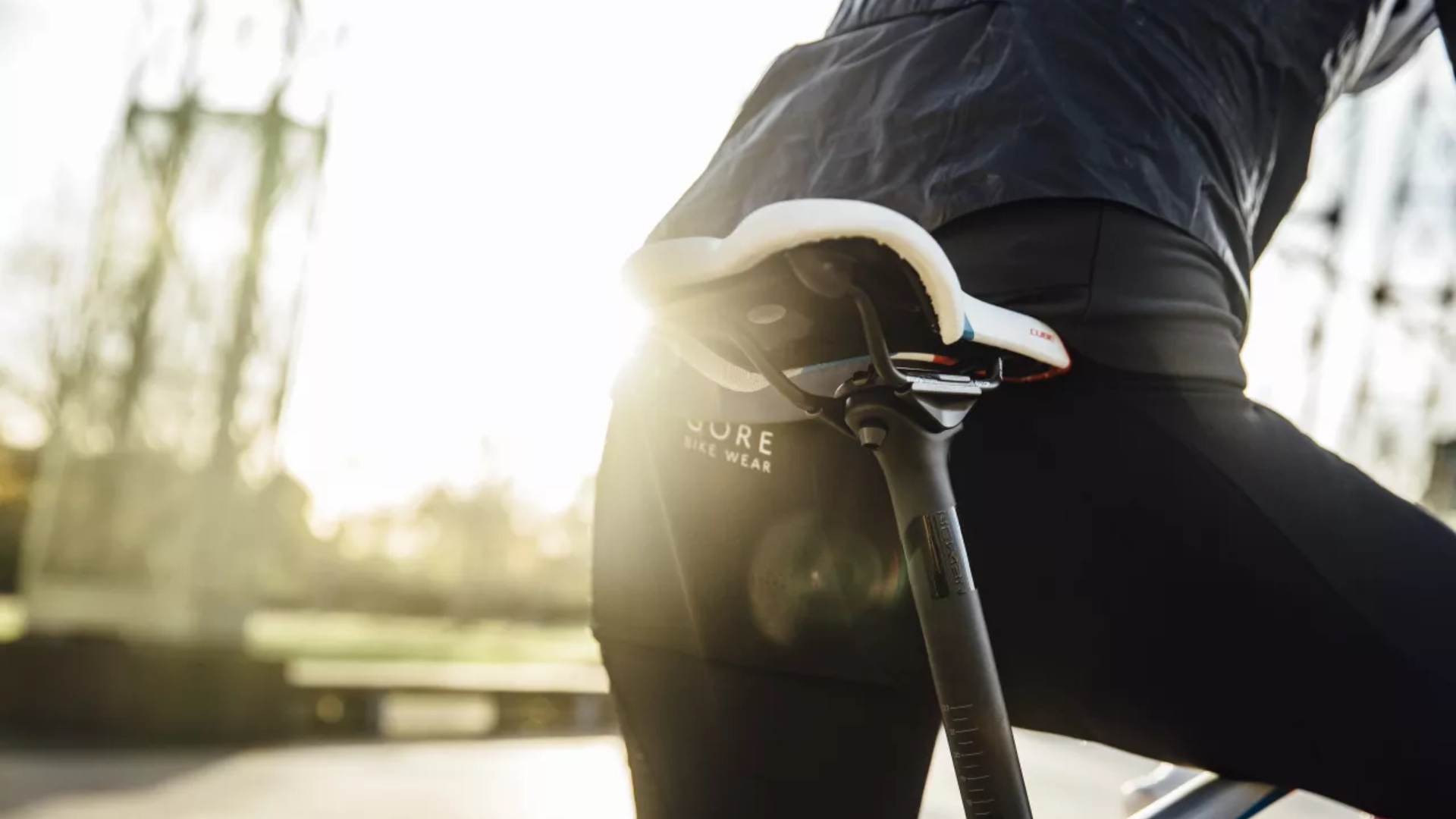
Saddle discomfort is not a 'normal' part of riding that must be endured
According to Prescott, “there's a real correlation between how much the company is involved in doing proper biomechanical research or bike fitting research [and the quality of the saddle they fit].” Of course, the largest brands in the world have more cash to plough into this area. However, one product manager admitted that the brand approach had been “lazy” in the past. This is a problem for brands, and the industry as a whole, to address.
But what does this mean for everyday cyclists? The beginners who have, perhaps, abandoned their bikes? The most important thing is simply that they’re able to find comfort.
In an ideal world, research and testing into saddles will improve, and whilst there is no “one size fits all” perfect approach, we may begin to see more “one size fits more” solutions. Or, as a focus on sustainability intensifies, perhaps a way around the logistical headaches of offering more choice at purchase will be found.
In the meantime, the message is clear: riding a bike, especially for a short duration, should not be agony. If it is, don’t discard the bike, check in for a bike fit, research how to choose the best saddle for you, and ride on in comfort.

Thank you for reading 20 articles this month* Join now for unlimited access
Enjoy your first month for just £1 / $1 / €1
*Read 5 free articles per month without a subscription

Join now for unlimited access
Try first month for just £1 / $1 / €1
Get The Leadout Newsletter
The latest race content, interviews, features, reviews and expert buying guides, direct to your inbox!
Michelle Arthurs-Brennan the Editor of Cycling Weekly website. An NCTJ qualified traditional journalist by trade, Michelle began her career working for local newspapers. She's worked within the cycling industry since 2012, and joined the Cycling Weekly team in 2017, having previously been Editor at Total Women's Cycling. Prior to welcoming her first daughter in 2022, Michelle raced on the road, track, and in time trials, and still rides as much as she can - albeit a fair proportion indoors, for now.
Michelle is on maternity leave from April 2025 until spring 2026.
-
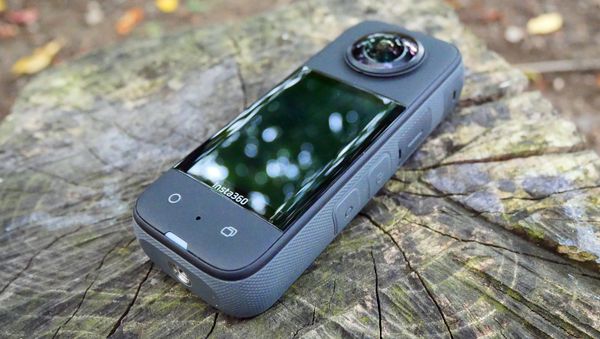 I have been capturing my cycling adventures for over 20 years, and two of the best action cameras for cyclists have just hit their lowest prices on Amazon
I have been capturing my cycling adventures for over 20 years, and two of the best action cameras for cyclists have just hit their lowest prices on AmazonDeals Amazon has slashed the price on Insta360 cameras, including the highly rated X3, which has a huge 30% off
By Paul Brett Published
-
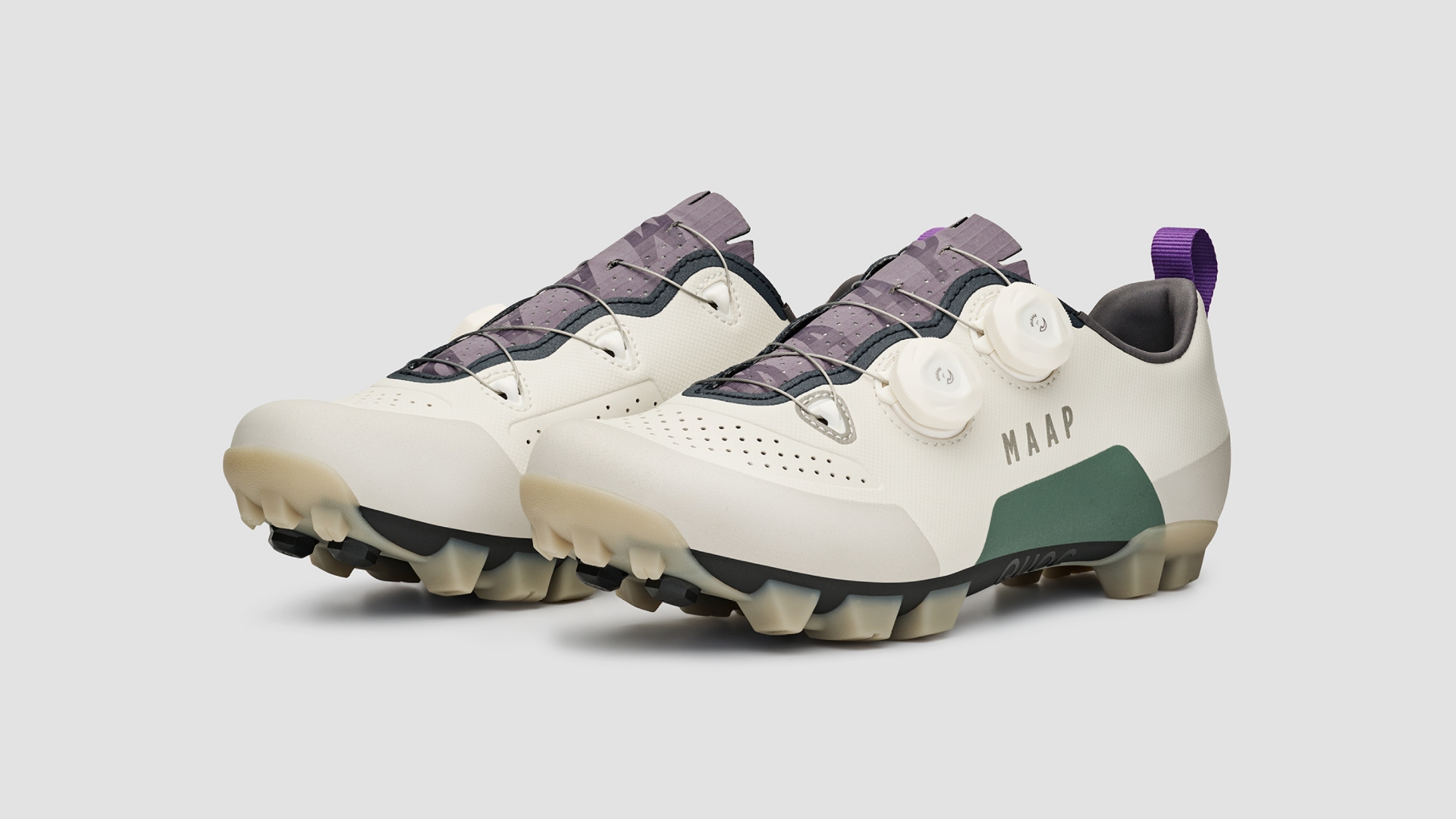 MAAP teams up with QUOC; first collab is the Gran Tourer XC shoe
MAAP teams up with QUOC; first collab is the Gran Tourer XC shoeDesigned for off-road riding the limited-edition shoe features a new colourway and other features
By Luke Friend Published